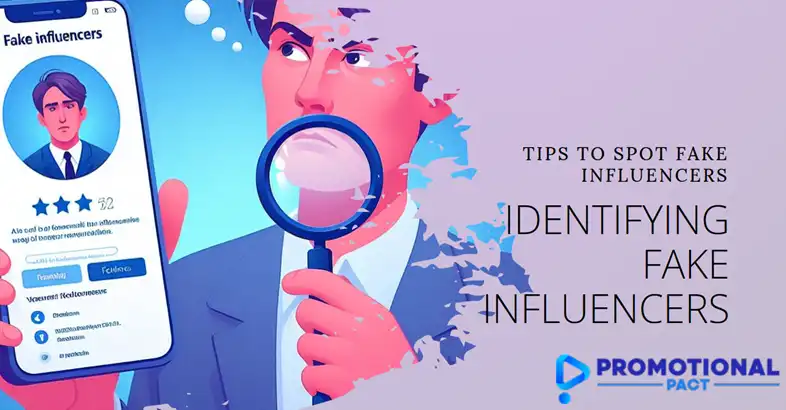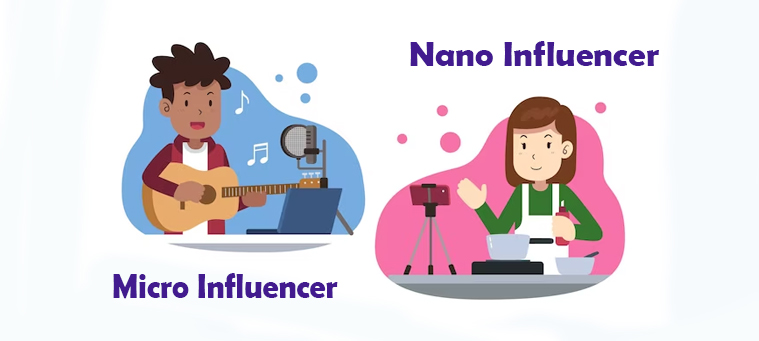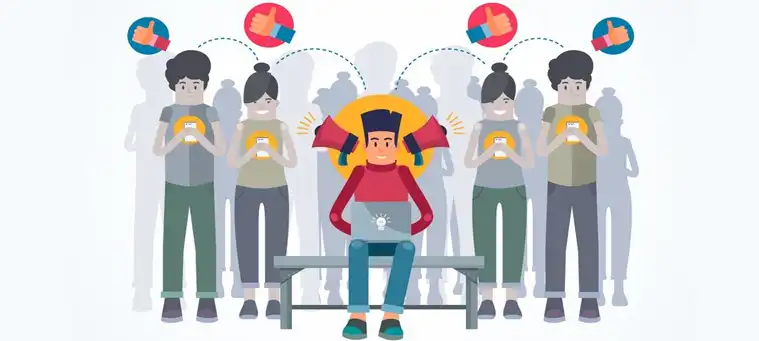Influencer marketing has become integral for brands. But what if that hot influencer with amazing engagement seems a bit fishy? Some inflate metrics to appear more influential than they are – using bought followers and faked engagement to boost numbers. Essentially they exaggerate reach to win contracts.
Identifying these fake influencers before hiring is crucial. Otherwise brands waste money and effort on poor ROI and actual influence. We have to vet metrics beyond the facade of flashy images and popularity.
This article explores tips on detecting fake influencers by analyzing the reality behind the hype. I’ll share strategies to weed out frauds padding up fake-looking metrics and engagement.

Check Out the Engagement Rate
Engagement rate refers to the level of interaction an influencer’s audience has with their content. Measured via metrics like likes, comments, and shares, it signals the influencer’s ability to capture a niche. As a rule of thumb, engagement below 1% consistently suggests artificial inflation through fake followers or bots.
Let’s have an example, according to many sources, Kylie Janner is a fake influencer. So, I decided to check and use the audit tool developed by Modash. After researching, I found that she has an engagement rate lower than 1% according to the Modash tool which means she actually has a red flag!

For specifics, Instagram engagement is ideally around 1-3%, Facebook sits between 1-5%, Twitter sees about 1-3% and YouTubers range from 3-7%. The rates can fluctuate based on niche but they rarely ever dip to below 1%.
Remember, engagement rates that seem suspiciously low relative to someone’s follower count should raise red flags. The common assumption is – that the more followers an influencer has, the more engagement they will garner. When that expected correlation doesn’t add up, it suggests the followers may not be real people actually interested in their content after all.
Do Follower Analysis
Don’t just look at the vanity metric of total followers. Actually, analyze the make-up of an influencer’s audience for suspicious signs. Start by checking if their followers seem to match the niche or industry they operate in. For example, does a fashion influencer have followers interested in clothing and lifestyle brands? What about location – does their audience hail from geographies they create content for?
Fake followers bought from bot farms rarely have accurate bios or demographics. Sort their followers’ list by latest additions and check for any unusual gaps or spikes.

See if tagged photos feature recurring accounts as opposed to real-life friends and connections. Inauthentic influencers tag bot accounts or professional pods to fake peer engagement.
Compare subscriber counts to views on Stories and posts. If there’s a wide disconnect between their perceived reach and actual views, it suggests the subscriber base isn’t completely genuine. Essentially, analyze their followers list for relevance and patterns commonly linked to artificial inflation.
Research about Their follower growth
Keeping an eye on how fast an influencer’s audience expands offers clues to authenticity. Healthy, organic growth tends to be gradual over years of consistency for creators providing true value.
However, influencers resorting to bots and buying followers experience sudden surges rather than smooth upticks. Analyze their growth charts in tools showing gains by date. Spikes of thousands or tens of thousands of followers added in short periods – days or weeks – signal inorganic inflation. This disconnects from actual content quality. Comparing before-and-after states revealing abnormal jumps indicates followers may have been purchased. Slow and steady authentic growth clarifies creators in it for genuine connections.

Check out Reviews and Their Reputation
The biggest sign of a potential fake influencer is accusations and complaints calling them out as frauds. But social media platforms alone rarely reveal the full picture. Expand the scope wider to search for their brand reputation across the internet for red flags.
For one, search for their account name combined with terms like “fake” or “fraud” on Google to surface allegations from various sources. When anonymity provides a cover for fakes, seeing other sites question credentials is crucial.

Expand beyond their curated content to tagged photos or comments calling them out for suspicious metrics and practices. Their response to such accusations also matters in understanding intention. An innocent influencer would address concerns transparently.
See if review platforms like Yelp have feedback from past clients on any shady practices as well. Consumer sites reveal more about real service quality versus social media presence alone. Contacting a few regular commenters can also help sniff out engagement pods by trading likes and comments.
Essentially, go beyond the manicured perception on their profiles alone to get second opinions evaluating their practices. This determines if other observers also notice something amiss or can vouch for them.
Use Audit Tools to Know ins and outs of the Influencer

Specialized tools like SocialBlade, HypeAuditor, Upfluence and Follower Audit provide deeper analysis that manual checking misses. Their algorithms and benchmark data parse influencer audience demographics, engagement authenticity, growth histories, and more.
For instance, they piece together where followers are located and interested in. Irrelevant demographics signals bought ghost followers. By analyzing comments and likes, they categorize engagement as genuine or inflated using bots/farms. They quickly highlight any odd surges in followers without viral triggers, as well as compare influencer engagement rates to identify suspicious outliers.
Essentially these audit tools break down audience legitimacy through metrics like % fake followers and engagement levels. Presence over 10% in critical areas warrants investigating further. Their analysis depth makes them invaluable for effective vetting.
What Next After Identifying Fake Influencers?
The steps for unearthing convincing evidence of an inauthentic influencer include:
Report Their Fake Activity
Inform the social media platforms that the influencer seems to violate policy around fake engagements. Multiple reports put the account on their radar.
Tell the Influencer Why You’re Pausing the Partnership
Have an open chat explaining which metrics seemed strange. Say you need to pause working together as a result. This gives proper closure.
Give Other Brands a Heads Up
Discreetly let other advertisers who may partner with them know your concerns. This helps them avoid potential issues too.
Document the Investigation Details
Keep screenshots and notes on the suspicious patterns found. Helps explain if questions come up later about ending things.
Add Them to an Internal Do-Not-Contact List
Put their name on an internal blacklist to ensure no one on your team engages again even if they restart their image.
While scammed influencers erode marketing budget and trust, avoid reacting confrontationally. They still have followers who look to them for value beyond commercial matters. Be ethical about accountability.
End Notes
Well those are my top tips for identifying shady influencers and analyzing who might have fake-looking numbers. As you can see, there are some clear patterns often shown by those trying too hard to appear legit. Do some digging below the surface to catch the fakers out there fudging their figures by padding their popularity!
I hope these suggestions for spotting inflated metrics or suspicious audience spikes help assess real influence levels before spending on partnerships. Stay vigilant before believing those flashy images as we navigate the messy influencer space! And feel free to reach out in comments if you have any other useful methods I should know for calling out fake influencers!

